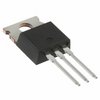Part Details for STGP12NB60HD by STMicroelectronics
Results Overview of STGP12NB60HD by STMicroelectronics
- Distributor Offerings: (0 listings)
- Number of FFF Equivalents: (0 replacements)
- CAD Models: (Request Part)
- Number of Functional Equivalents: (0 options)
- Part Data Attributes: (Available)
- Reference Designs: (Not Available)
Tip: Data for a part may vary between manufacturers. You can filter for manufacturers on the top of the page next to the part image and part number.
STGP12NB60HD Information
STGP12NB60HD by STMicroelectronics is an IGBT.
IGBTs are under the broader part category of Transistors.
A transistor is a small semiconductor device used to amplify, control, or create electrical signals. When selecting a transistor, factors such as voltage, current rating, gain, and power dissipation must be considered, with common types. Read more about Transistors on our Transistors part category page.
Part Details for STGP12NB60HD
STGP12NB60HD CAD Models
STGP12NB60HD Part Data Attributes
|
|
STGP12NB60HD
STMicroelectronics
Buy Now
Datasheet
|
Compare Parts:
STGP12NB60HD
STMicroelectronics
30A, 600V, N-CHANNEL IGBT, TO-220AB, TO-220, 3 PIN
|
| Rohs Code | Yes | |
| Part Life Cycle Code | Obsolete | |
| Ihs Manufacturer | STMICROELECTRONICS | |
| Part Package Code | TO-220AB | |
| Package Description | TO-220, 3 PIN | |
| Pin Count | 3 | |
| Reach Compliance Code | unknown | |
| ECCN Code | EAR99 | |
| Collector Current-Max (IC) | 30 A | |
| Collector-Emitter Voltage-Max | 600 V | |
| Configuration | SINGLE WITH BUILT-IN DIODE | |
| Gate-Emitter Thr Voltage-Max | 5 V | |
| Gate-Emitter Voltage-Max | 20 V | |
| JEDEC-95 Code | TO-220AB | |
| JESD-30 Code | R-PSFM-T3 | |
| JESD-609 Code | e3 | |
| Number of Elements | 1 | |
| Number of Terminals | 3 | |
| Operating Temperature-Max | 150 °C | |
| Package Body Material | PLASTIC/EPOXY | |
| Package Shape | RECTANGULAR | |
| Package Style | FLANGE MOUNT | |
| Polarity/Channel Type | N-CHANNEL | |
| Power Dissipation-Max (Abs) | 100 W | |
| Qualification Status | Not Qualified | |
| Surface Mount | NO | |
| Terminal Finish | MATTE TIN | |
| Terminal Form | THROUGH-HOLE | |
| Terminal Position | SINGLE | |
| Transistor Application | MOTOR CONTROL | |
| Transistor Element Material | SILICON | |
| Turn-off Time-Nom (toff) | 295 ns | |
| Turn-on Time-Nom (ton) | 51 ns |
STGP12NB60HD Frequently Asked Questions (FAQ)
-
The maximum junction temperature (Tj) for the STGP12NB60HD is 175°C, as specified in the datasheet. However, it's recommended to keep the junction temperature below 150°C for reliable operation and to prevent thermal runaway.
-
To calculate the power dissipation of the STGP12NB60HD, you need to consider the voltage drop across the device, the current flowing through it, and the thermal resistance (Rth) from junction to ambient (Rth(j-a)). The power dissipation (Pd) can be calculated using the formula: Pd = (Vds * Ids) + (Rth(j-a) * Tj), where Vds is the drain-source voltage, Ids is the drain-source current, and Tj is the junction temperature.
-
The recommended gate resistor value for the STGP12NB60HD depends on the specific application and the required switching frequency. A general guideline is to use a gate resistor value between 10 ohms and 100 ohms to ensure proper switching and to prevent oscillations. However, it's recommended to consult the application note or the datasheet for more specific guidance.
-
Yes, the STGP12NB60HD is suitable for high-frequency switching applications up to 100 kHz. However, it's essential to consider the device's switching characteristics, such as the rise and fall times, and the gate charge, to ensure proper operation and to prevent losses. Additionally, the layout and the PCB design should be optimized to minimize parasitic inductances and capacitances.
-
To protect the STGP12NB60HD from overvoltage and overcurrent, it's recommended to use a voltage clamp or a TVS (Transient Voltage Suppressor) diode to limit the voltage across the device. Additionally, a current sense resistor and a fuse can be used to detect and prevent overcurrent conditions. It's also essential to follow proper PCB design and layout guidelines to ensure that the device is properly decoupled and that the current paths are minimized.
